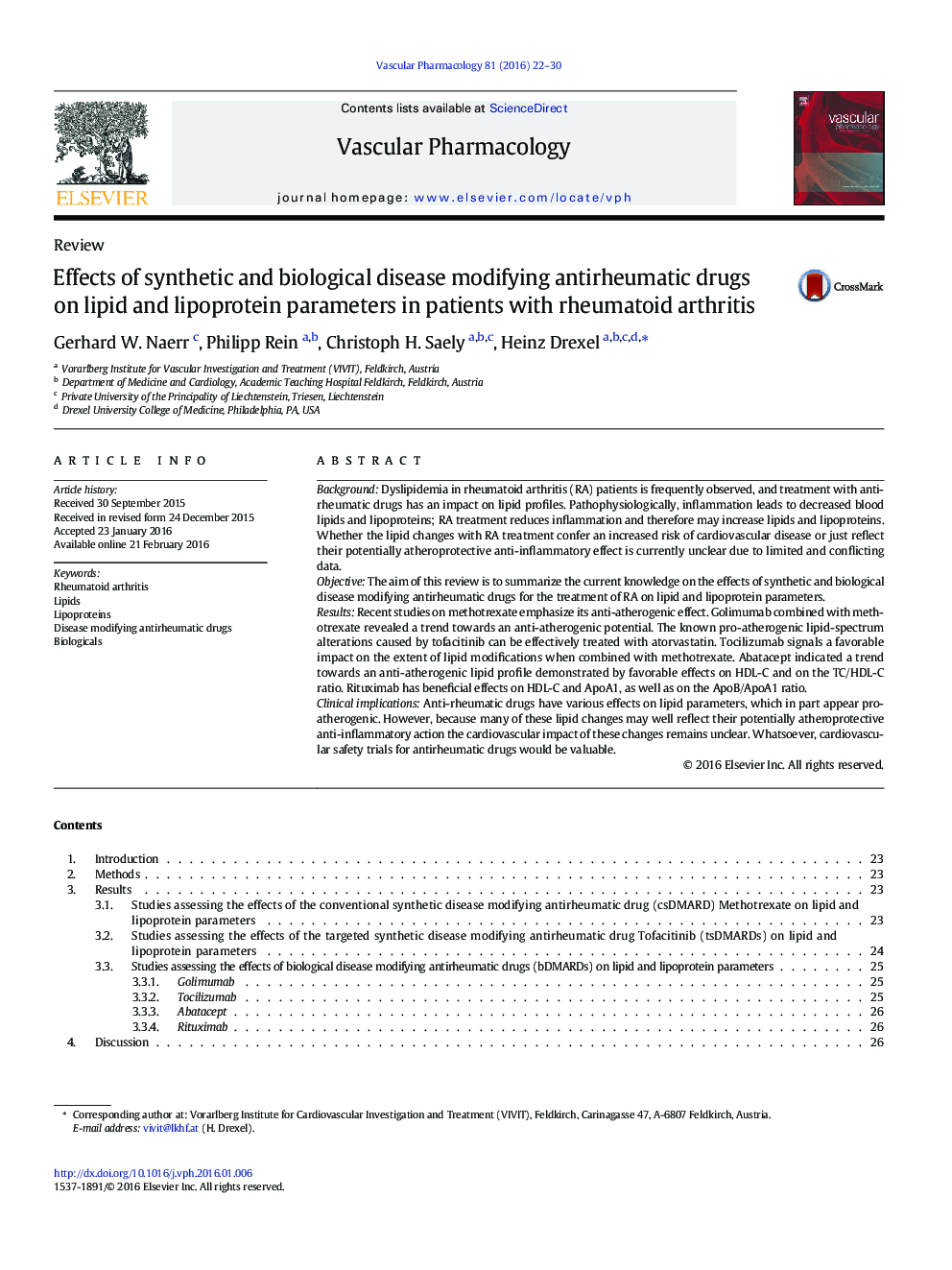| کد مقاله | کد نشریه | سال انتشار | مقاله انگلیسی | نسخه تمام متن |
|---|---|---|---|---|
| 2573926 | 1561237 | 2016 | 9 صفحه PDF | دانلود رایگان |
BackgroundDyslipidemia in rheumatoid arthritis (RA) patients is frequently observed, and treatment with anti-rheumatic drugs has an impact on lipid profiles. Pathophysiologically, inflammation leads to decreased blood lipids and lipoproteins; RA treatment reduces inflammation and therefore may increase lipids and lipoproteins. Whether the lipid changes with RA treatment confer an increased risk of cardiovascular disease or just reflect their potentially atheroprotective anti-inflammatory effect is currently unclear due to limited and conflicting data.ObjectiveThe aim of this review is to summarize the current knowledge on the effects of synthetic and biological disease modifying antirheumatic drugs for the treatment of RA on lipid and lipoprotein parameters.ResultsRecent studies on methotrexate emphasize its anti-atherogenic effect. Golimumab combined with methotrexate revealed a trend towards an anti-atherogenic potential. The known pro-atherogenic lipid-spectrum alterations caused by tofacitinib can be effectively treated with atorvastatin. Tocilizumab signals a favorable impact on the extent of lipid modifications when combined with methotrexate. Abatacept indicated a trend towards an anti-atherogenic lipid profile demonstrated by favorable effects on HDL-C and on the TC/HDL-C ratio. Rituximab has beneficial effects on HDL-C and ApoA1, as well as on the ApoB/ApoA1 ratio.Clinical implicationsAnti-rheumatic drugs have various effects on lipid parameters, which in part appear pro-atherogenic. However, because many of these lipid changes may well reflect their potentially atheroprotective anti-inflammatory action the cardiovascular impact of these changes remains unclear. Whatsoever, cardiovascular safety trials for antirheumatic drugs would be valuable.
Janus face of antirheumatic therapy. Antirheumatic drugs dependent on their respective mechanisms of action cause a potentially atheroprotective decrease in rheumatic inflammation but may lead to a potentially atherogenic increase in blood lipids and lipoproteinsFigure optionsDownload high-quality image (156 K)Download as PowerPoint slide
Journal: Vascular Pharmacology - Volume 81, June 2016, Pages 22–30
